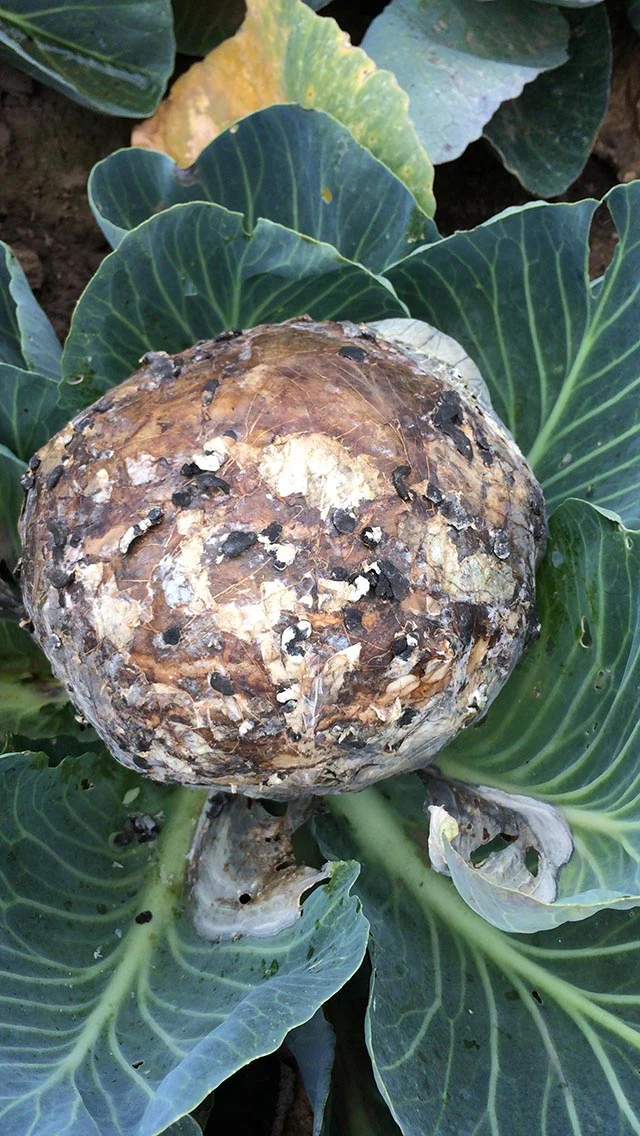
Sclerotinia - Brassicas
Sclerotinia symptoms & Sclerotinia on cabbage head (Photo D. Pop)

Sclerotinia symptoms & Sclerotinia on cabbage head (Photo D. Pop)
Pathogen
Fungus
Hosts
Field brassicas, oilseed Rape, peas, potatoes, carrots, lettuce and beans
Symptoms
Sclerotinia of field brassicas can affect the plants at all stages from seedlings to flowering plants to rots in storage.
Development
Given suitable soil condition sclerotia germinate to form apothecia (small trumpet-like structures) which release air-borne ascospores which invade host plants. The fungus penetrates through wounds or areas of plant tissue damaged by insect, disease or mechanical injury and spreads internally by mycelial growth.
The fungus completes its lifecycle by forming irregular black resting bodies known as Sclerotia in the stem cavity and in the roots when lesions are at stem bases. Sclerotia can also form on the outside of the lesion following suitably humid weather.
Favourable Factors
Sclerotia occur within the soil profile and those in surface layers germinate in spring when soil temperatures are above 10°C to form apothecia. These structures are 5mm to 15mm in diameter and produce acospores which are discharged into the air. Soils must be moist for sclerotia germination to occur.
Importance
Not a disease of serious economic importance in the UK , however damage to young plant stems can lead to wilting and a check to growth whereas early infection to cauliflowers and cabbages can lead to heads with water soaked tissue covered with white mycelium and embedded with black sclerotia which render the produce unmarketable.
Control
No resistant cultivars are available
Adopt a rotation of at least four years between hosts crops
Destroy or bury infected stubble
Ploughing a field after brassicas buries sclerotia and impairs their ability to germinate if they can be kept deeply buried
Foliar fungicide applied for disease control can protect against Sclerotinia.
Soil incorporation of biological control agents such as Contans WG.

Sclreotinia on cabbage head (Photo D. Pop)



